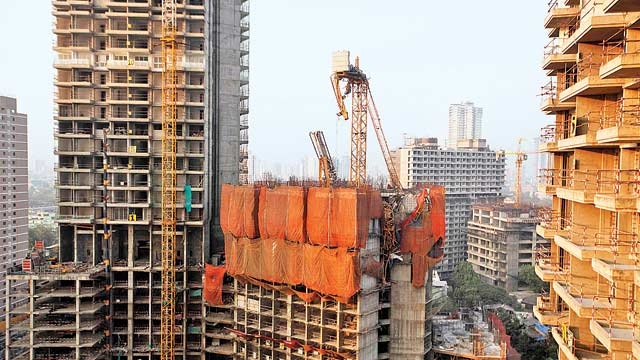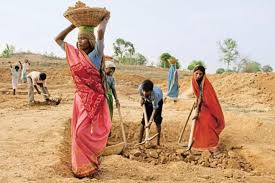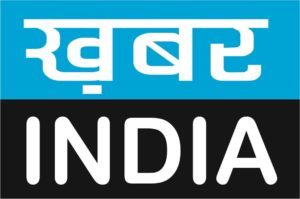However, it is the larger number of unskilled workers, returning home who are to commitment of their states to provide them employment. Many of the able bodied would find jobs for themselves under MNREGA or even in the agricultural operations but such employment would be for a limited period. This breathing time must be utilized by state Governments to develop strategies for self–employment.
Bhupati Prasad Pandey
(IAS 1976 Batch, Retd. Additional Chief Secretary, Maharashtra, Mumbai)

COVID-19 has disrupted economies and brought the global population to its knees and in search for employment, and India has been no exception. As stated by the Governor of the R.B.I. the Indian economy currently has a negative trend and, in this scenario, providing employment or self- employment is the issue which the central and state governments should be working on, on a priority. The Government of India has already announced several decisions to help the MSMEs and provide succor to the migrant labor. Now, state governments must build upon this and provide for a gainful living to the large number of laborers who are returning to their states and homes.
Traditionally, registering employment seekers and placing them has been the responsibility of the state employment exchanges. Since independence, these exchanges have been the only agency that provides organizations with the contact list of candidates for any position/ vacancy in their organization, government or private. However, as time passed, these exchanges faced direct competition from multiple sides such as: direct recruitment by organizations after placing advertisement in newspapers, emergence of recruitment boards and emergence of private placement agencies. These alternatives provided placement to job seekers faster than traditional employment exchanges. The percentage of placements by the employment exchanges further dwindled with the emergence of employment portals rendering them a remnant of an age gone by.

In 1998 the Government of Maharashtra, after due consideration, decided to rename the department as Employment and Self Employment department. In its new ‘Avatar’, the department computerized the entire list of employment seekers. Shockingly, it was found that the oldest registration was yet to be given a call and the person was then over 50 years of age. The notification of vacancies by departments or organizations had also reduced drastically. In such a dismal scenario, it was decided to revisit the list and use it for self -employment while continuing with the traditional function of the department. After a series of meetings, coordinating, cajoling, and convincing, bankable proposals were prepared and Seva societies of eleven or more members were set up. By word of mouth, the news of youth starting their own enterprise started spreading and soon, more and more youth and women started coming forward to start their own enterprise. By the year 2002, over 2800 seva societies got registered in the state and over fifty thousand unemployed were successfully involved in self-employment. Enthused by the response, the Chief Secretary issued comprehensive orders in August 2002, to reserve and outsource various activities within governmental working for the seva societies. Youth from minority communities also benefitted from the self-employment program and over rupees four crores of subsidy amount was spent out in a three months’ period and asset created insured and hypothecated to the financial institutions.
 This performance found place in the Governor’s speech to the joint session of the state legislature from 2000 to 2003 and in the Finance minister’s Budget speech of the same period. The self-employment programme lost its momentum from 2008 and performance dwindled. In 2012, Government decide to get a skill gap study conducted by the National Skill Development Corporation for the period (2012- 17, 2017-22). The Department was renamed the Skill Development Department in 2015. Another report was prepared on skill gap by KPMG in 2018. The state is now working on skill development programs to bridge the skill gap on the lines indicated in the reports.
This performance found place in the Governor’s speech to the joint session of the state legislature from 2000 to 2003 and in the Finance minister’s Budget speech of the same period. The self-employment programme lost its momentum from 2008 and performance dwindled. In 2012, Government decide to get a skill gap study conducted by the National Skill Development Corporation for the period (2012- 17, 2017-22). The Department was renamed the Skill Development Department in 2015. Another report was prepared on skill gap by KPMG in 2018. The state is now working on skill development programs to bridge the skill gap on the lines indicated in the reports.Now, when a large number of skilled personnel have lost their livelihood due to COVID-19 and automation, the states must work on two fronts: first, the governments must provide such persons with immediate livelihood; and second the must provide them with suitable facilities and liquidity to start their own enterprise providing employment to others.
In this regard, states would be required to prepare a dossier of such talents, sector- wise and upskill workers to adjust to the changing work environment and accelerating technological changes. Meanwhile, individual proposals for self-employment should be evaluated for technical and financial feasibility. Proposals that meet the requirements, could be facilitated with enough liquidity to start their own enterprise, and provide employment to others.
However, it is the larger number of, so called, unskilled workers, returning home who are to test the resolve and commitment of their states to provide them employment. Many of the able bodied would find jobs for themselves under MNREGA or even in the agricultural operations but such employment would be for a limited period. This breathing time must be utilized by state governments to develop strategies for self–employment, if not already done. Such number of persons who seek to start their own enterprise could be assisted to take them up, depending upon their feasibility. Others, who have completed their secondary schooling, could be enrolled for training with the Industrial Training Institutes for courses which would provide them with suitable employment on successful completion of the course.
In this context, it is important that the societal approach towards Vocational Education is reevaluated. For long, vocational education has been looked down upon as a poor cousin who held hands of those unfortunate ones who could not score higher grades or marks at the secondary or intermediate levels. India still needs to learn to respect labor and hard work. It must be acknowledged that vocational education provides an opening to those unfortunate ones who underperform in traditional settings but possess creative talents and are capable of producing a product, perhaps a better product than the last one, seen or made. The students in the vocational courses are the ones who help profusely in strengthening the economy of the country.
In India, vocational education courses were initially conducted by government technical institutes. Such institutes were reflective of the societal poor estimation in the infrastructure available, the outdated courses and disinterested instructors. No wonder, therefore, that hardly a sizeable percentage of trainees could get jobs on completion of their course. Those selected under apprenticeship courses were better off. The private sector had been a loser in this regard. Consequently, once permitted, private sector stepped in to run their own Industrial training institutes where courses are designed to train and prepare the trainees to take up similar responsibilities after completion of the course. Thus, in Maharashtra, government ITIs number 416 and private ITIs total 493, with a total intake capacity of 144115 annually. 90% of the seats are filled up every year and over 70% of those passing out from the private and government ITIs join jobs. It is the 30% that miss out on jobs that now need to be assisted, in addition to the number of laborers who are now displaced from their jobs
India needs to learn a lesson from the German vocational education system, which is undoubtedly the premier system in the world. German educational system provides an option to the students either to continue with higher education or move to vocational education, as per his interest, aptitude, and performance in earlier examinations. Once joining a vocational course, the student starts by spending 80% of time in class- room and 20% working in a manufacturing unit. At a later stage, the percentage is reversed, and he starts spending 80% time in the enterprise, At the end of the course, he has a job in the enterprise. He remains free to pursue his further studies in the same field and seek supervisory or managerial positions. India needs to adopt this system to support the dreams of becoming a manufacturing powerhouse for internal consumption and export.
Having highlighted the need for change in approach towards vocational education, we need to assess whether we are prepared to help the many migrant labor seeking employment attain respectful, sustainable employment in the 21st century. As detailed above, the work done in Maharashtra in 1999-2003, can be replicated in any state. What is required is a strong political will, clear articulation of policy and urgency in implementation by a government machinery, committed to the policy. There is no dearth of opportunities for self-employment and the Indian youth increasingly wants to exercise control over its work and future. Some may require policy interventions at the national and state levels but even agriculture, service sector, small scale manufacturing can absorb quite a number. On the skilled side, the health sector provides a lot of opportunities- it promises to be IT sector of the yester years. The health sector itself could provide job opportunities to a substantial number of persons in every state annually by tweaking the standards and make them more realistic. If we are looking to “Atma nirbhar “India, a beginning must be made very sincerely and what better time than these challenging ones.
(Email of Writer: bhupatip@hotmail.com)
















